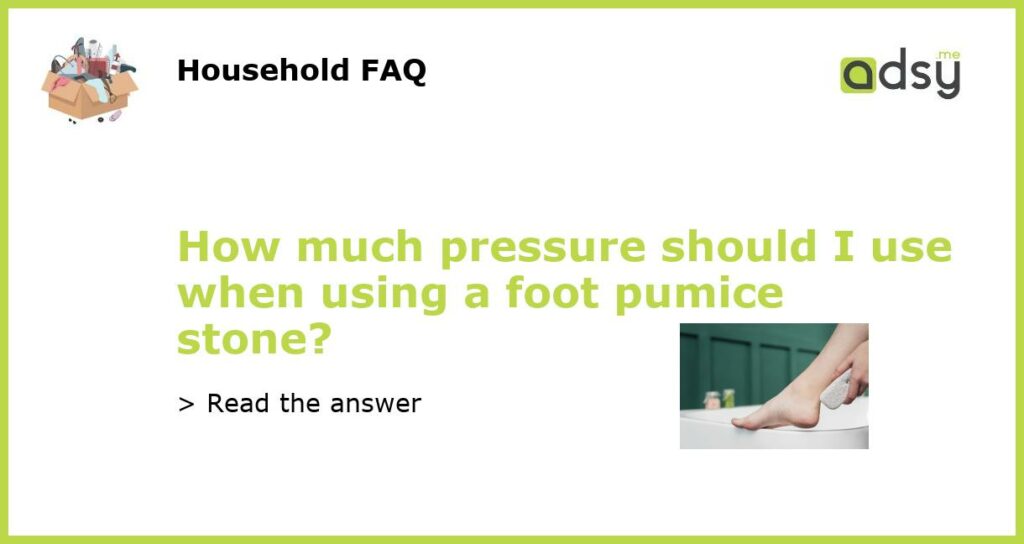Understanding Foot Pumice Stones
Foot pumice stones are handy tools that help you get rid of rough skin on your feet. These stones consist of high-quality lava or other natural stones that are abrasive enough to exfoliate dead skin cells. However, using them improperly can cause discomfort and, worse, injury. One of the common questions to ask when using these stones is how much pressure to apply.
The Importance of Applying the Right Pressure
Before we delve into the specifics, it’s essential to know that you need to strike a balance between exerting enough force to remove the dead skin and not applying too much that may aggravate or damage healthy skin. Applying too much pressure or using the stones too frequently may remove healthy skin, cause bleeding or expose underlying skin, leading to infections.
General Guidelines
When it comes to applying pressure on a foot pumice stone, it’s important to keep it gentle. The rule of thumb is always to use the stone’s abrasive surface gently and in small areas first before covering larger sections. Depending on the foot area’s thickness, one should vary the pressure to ensure that the stone removes the dead skin effectively without causing undue damage.
Proper Technique
Another critical factor to consider when using foot pumice stones is the right technique. Experts recommend soaking your feet in warm water for a few minutes to soften the skin before starting the exfoliation process. Apply a little soap or body wash to the area and gently rub the pumice stone back and forth, side to side or in circular motions. Always use gentle strokes and apply less pressure when dealing with sensitive areas such as the heel or the ball of the foot.
When Not to Use Foot Pumice Stones
While foot pumice stones are great for exfoliation, they are not for everyone. People with certain skin conditions such as eczema, psoriasis, or diabetes should avoid using them. Additionally, if you have open sores, cuts, or wounds on your feet, using the stones may lead to infections or aggravate the injuries. Anyone with poor blood circulation such as those with peripheral arterial disease should avoid using these stones too.






